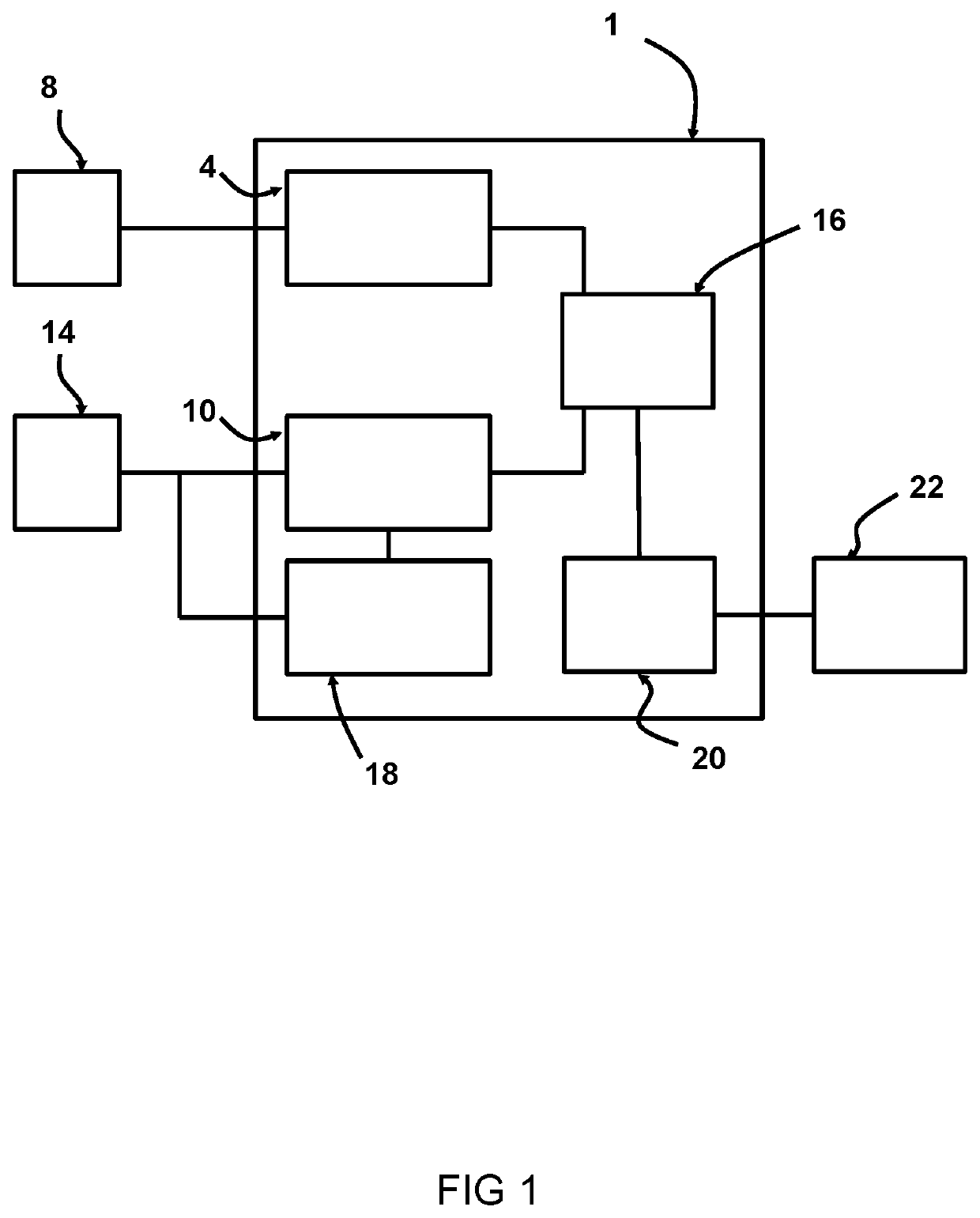Method and system for patient-specific predicting of cyclic loading failure of a cardiac implant
a cardiac implant and cyclic loading technology, applied in medical informatics, medical simulation, medical images, etc., can solve the problem that the optimal implant device in view of acute outcome (e.g. deployment) not necessarily is optimal, and achieve the effect of minimizing the risk of cyclic loading failur
- Summary
- Abstract
- Description
- Claims
- Application Information
AI Technical Summary
Benefits of technology
Problems solved by technology
Method used
Image
Examples
Embodiment Construction
[0035]FIG. 1 shows a schematic representation of an exemplary system 1 for patient-specific predicting of cyclic loading failure of an implant device 2. In this example the implant device 2 is a cardiac implant, such as a stent or a replacement valve.
[0036]The system 1 includes a first receiving unit 4 arranged for receiving an implant model 6. The first receiving unit 4 can receive the implant model 6 from a first source 8, such as a memory, a database, a network such as the internet, or the like. The implant model 6 represents a three dimensional, 3D, mesh based representation of an implant device 2. The system 1 includes a second receiving unit 10 arranged for receiving a four-dimensional, 4D, patient-specific anatomical model 12. The second receiving unit 10 can receive the 4D patient-specific anatomical model 12 from a second source 14, such as a memory, a database, a network such as the internet, a medical imaging device such as a CT device, MRI device, ultrasound device or th...
PUM
 Login to View More
Login to View More Abstract
Description
Claims
Application Information
 Login to View More
Login to View More - R&D
- Intellectual Property
- Life Sciences
- Materials
- Tech Scout
- Unparalleled Data Quality
- Higher Quality Content
- 60% Fewer Hallucinations
Browse by: Latest US Patents, China's latest patents, Technical Efficacy Thesaurus, Application Domain, Technology Topic, Popular Technical Reports.
© 2025 PatSnap. All rights reserved.Legal|Privacy policy|Modern Slavery Act Transparency Statement|Sitemap|About US| Contact US: help@patsnap.com



